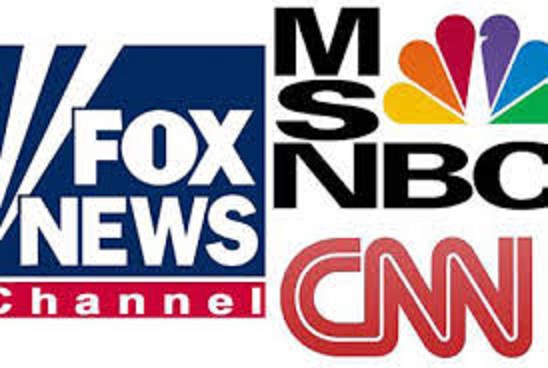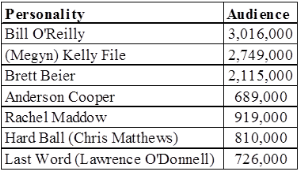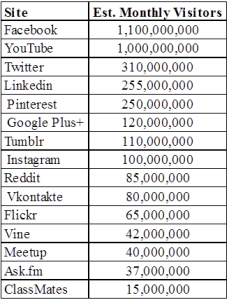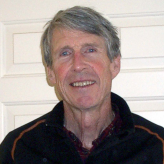
Elliott R. Morss ©All Rights Reserved
Introduction
I remember when Tip O’Neill, the Speaker of the House, would meet with President Reagan to “govern.” That meant that despite their political differences - O’Neill was a Democrat from Massachusetts and Reagan was a conservative Republican from California – they were able to compromise and move forward. Times have changed. I hypothesize that because of the political polarization stemming largely from cable news and social media, that is no longer possible. But before getting to my reasons underlying the hypothesis, I offer some data on news sources for the American public.
How Do Americans Get Their News?
The following table addresses this question. TV is the primary source for news. However, younger people are increasingly getting their news from online sources, many of which have no “journalistic” controls. It is also noteworthy that cell phones are growing as the vehicle for getting news. 38% of Americans owning cell phones often use them to get news, up from 21% in 2016.
Table 1. – How Americans Get Their News, by Age, 2016

Source: Pew Survey
It appears that most Americans have a healthy skepticism about all information sources (Table 2). The distrust is social media is deservedly the highest.
Table 2. – Trust in Media

Source: Pew Survey
Cable News - The Dominance of Fox
Weekly data jump around, but Table 3 gives offers a pretty steady picture. Fox dominates. Its normal audience is normally greater than CNN and MSNBC combined.
Table 3. – Top Cable Networks, Ranked by Audience, 2016 Week Ending December 18th

Source: Media Life
In the heat of the primaries (Aug. 15-24), Fox had 2.1 million prime time viewers. MCNBC had 1.1 million viewers followed by CNN with 746,000.
Table 4 gives an approximation of the leading newscasters. Do the networks make the lead newscasters or vice versa? There is probably a bit of both. But as with Fox dominating in viewers, Bill O’Reilly’s dominance among broadcasters is also impressive (Table 4). It should be noted that times are changing. Fox and O’Reilly are not nearly as popular among younger Americans.
Table 4. – Leading Cable News Personalities

Source: Media Life
Bias
The Pew Research Center's annual State of the News Media report concludes that a full 85% of MSNBC’s network's coverage can be classified as opinion or commentary rather than straight news. CNN and Fox News Channel, meanwhile, fall much closer to a 50/50 distribution, with Fox News skewing somewhat more heavily toward opinion (Table 5). However, with so many more people viewing Fox, their opinions will be more influential. Fox spends far more on production than the other two new channels.
Table 5. – Opinion and Factual Reporting

Source: Pew Research “State of the News Media Report”
Social Media
As with Cable ratings, the Social Media data differ by source. However, Table 6 gives a pretty good representation of the leading sites. Each of these sites makes it easy to find people with similar and dissimilar views and commenting is encouraged.
Table 6. – Leading Social Media Sites, 2016

Source: Ebiz
The Big Myth
People believe news organizations “keep political leaders in line.” According to Pew Research, three fourths of Americans believe the news media perform a “watchdog function” and keep politicians “in line.” The reality is somewhat different. Any TV producer will tell you they are looking for controversy - look at how Trump has been covered. And how can Cable News generate controversy? By getting politicians to take opposing stands. That sells. Good politics, good governance involves compromise, and finding compromise in public or private while the media is working to highlight differences is extremely difficult.
I quote from a recent study by a group of Stanford academics:
“We show instrumental variables estimates that watching FNC increases the probability of voting Republican in presidential elections. The tastes for news channels are partly determined by the closeness of the news channels’ estimated ideology to the individuals. Individual ideology evolves towards the estimated ideologies of the news channels that a consumer watches…. Furthermore, we estimate that cable news can increase polarization, and that this increase depends on both a persuasive effect of cable news and the existence of tastes for like-minded news.”
Social Media
And what is the effect of social media? We hear that social media is being used by terrorist organizations to recruit new members. They do this by attracting potential terrorists into discussion groups with like-thinking individuals. These groups reinforce the notion that terrorism is the answer.
Social media is playing the same role in politics. Just go to any political topic. Look at the comments. Very quickly, the comments sort out pro and con. The pros become “buddies” as do the cons. These discussions reinforce each side’s views that they are right.
For example, look at the commentary on Trump: strong opinions on both sides. But what is the reality? The one constant for Trump: a rolling change in positions. In reality nobody knows what he will do. But the true believers on both sides are pretty sure what he will do.
Conclusions
1. Cable news loves controversy. Forcing politicians to take stands generates controversy. But good governance in a democracy requires compromise.
2. Discussions on social media result in people finding others they agree with, thereby reinforcing belief they are right.
3. The freedom of speech protections of the US Constitution limit any interference in media behavior. But it is useful to be clear on what role the media is playing.



